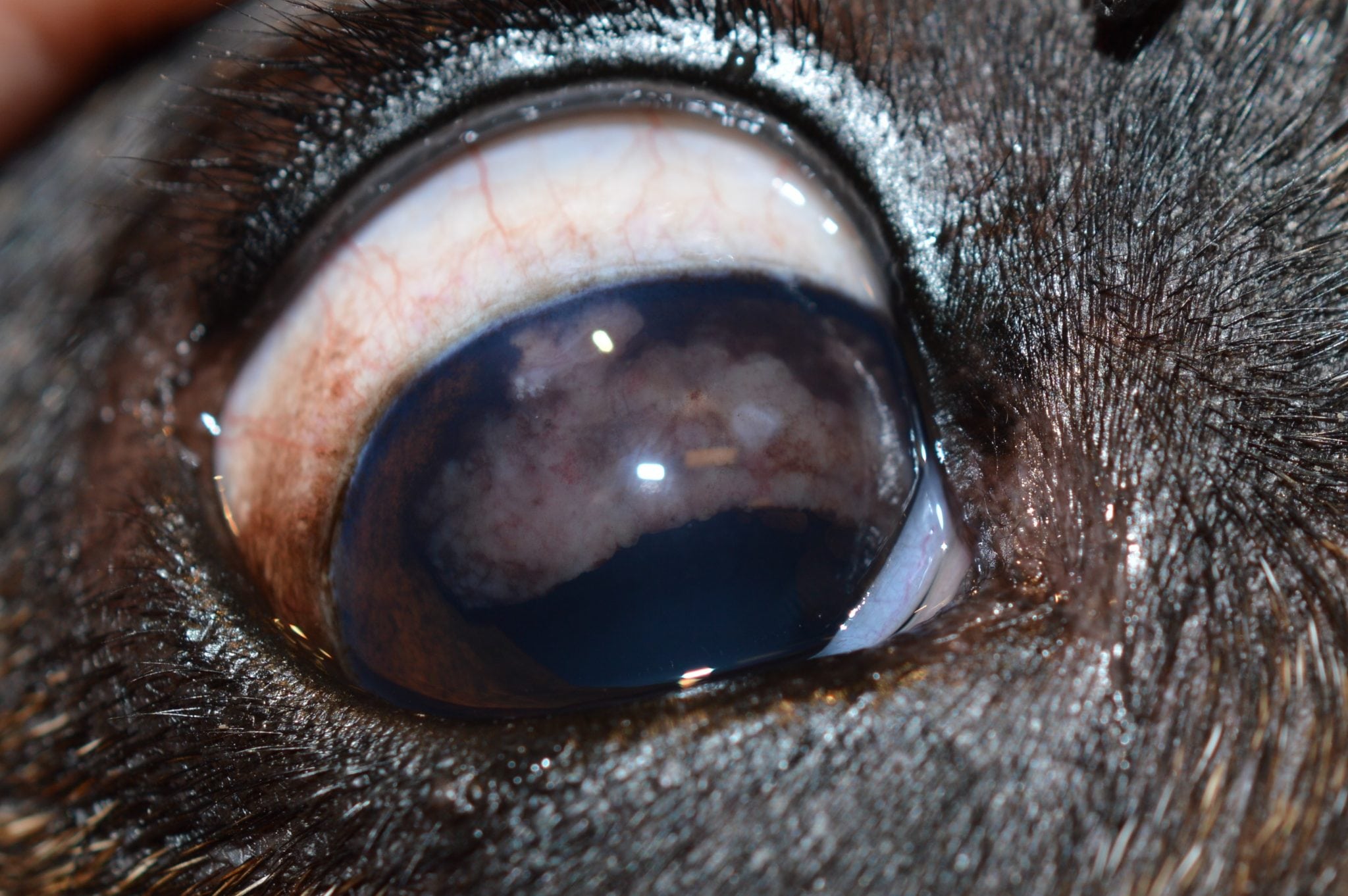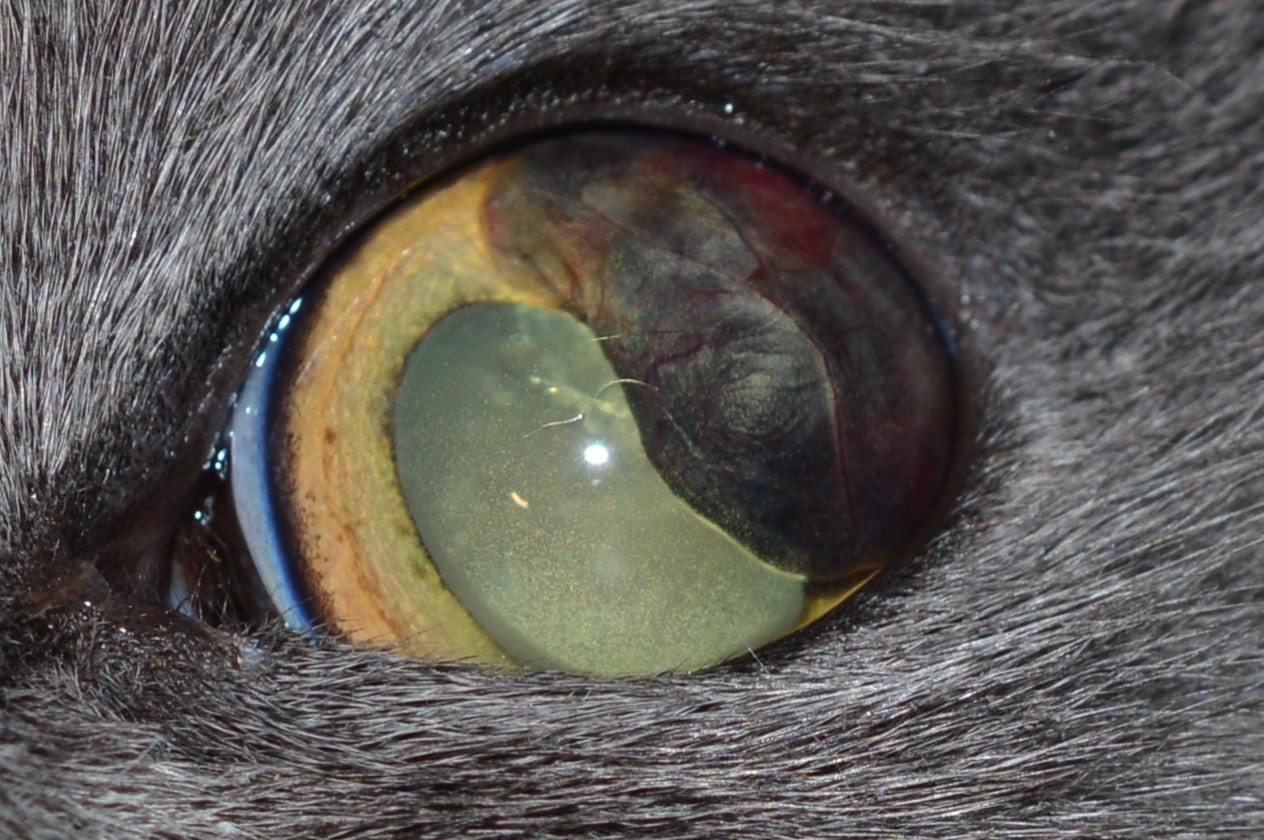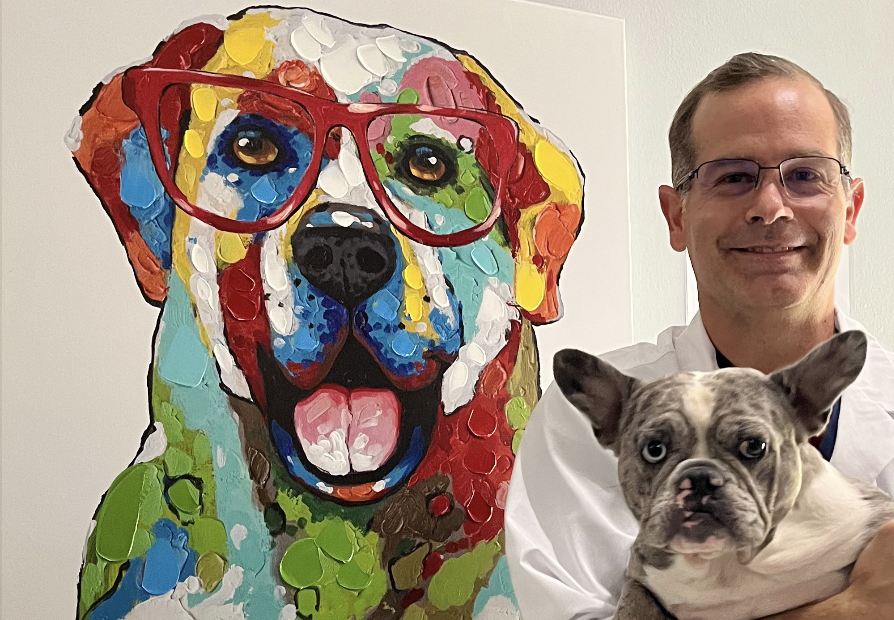Pet Intraocular Tumor in Katy, TX
A pet intraocular tumor is a growth that develops within the eye. These tumors can be either benign, meaning they are less aggressive and unlikely to spread, or malignant, which are more aggressive and have a higher potential to spread to other parts of the body. At Animal Eye Medical & Surgical Specialists in Katy, TX, we are dedicated to diagnosing and treating intraocular tumors in pets to support their eye health.
Clinical Signs of Pet Intraocular Tumors
The symptoms of intraocular tumors can vary based on the type and location of the tumor within the eye. Common signs to watch for include:
- Redness or Swelling: The eye may appear red or swollen, particularly around the iris or other internal structures.
- Squinting or Discomfort: Your pet may squint or show signs of discomfort in the affected eye.
- Cloudiness or Ocular Discharge: A cloudy appearance or discharge from the eye could indicate a tumor’s presence.
- Visible Mass or Iris Color Changes: In some cases, a mass may be visible inside the eye, or there may be noticeable changes in the color of the iris.
- Secondary Glaucoma: Tumors can lead to elevated eye pressure, causing secondary glaucoma.
- Vision Loss: Tumors can impair vision in the affected eye.
If you notice any of these signs in your pet, seek veterinary care promptly. Early detection and treatment are crucial for effectively managing intraocular tumors. Contact us today to discuss your pet’s eye health and explore the best treatment options available.


Common Types of Intraocular Tumors in Pets
Several types of tumors can develop within the eyes of pets. The most common intraocular tumor in dogs and cats is melanoma, particularly affecting the iris. This type of tumor often begins as small, abnormal spots on the iris and can progress over time, potentially leading to pain, loss of the eye, and even metastasis to other parts of the body.
Other types of intraocular tumors that may affect pets include:
- Lymphoma: A type of cancer that can affect multiple organs, including the eyes.
- Adenocarcinoma: A tumor that arises from the glandular tissues within the eye.
- Sarcoma: A tumor that can develop in the connective tissues of the eye.
Causes of Pet Intraocular Tumors
The exact cause of intraocular tumors in pets is often unknown. However, certain factors can contribute to their development:
Injuries to the eye, especially in cats, can lead to the formation of tumors.
Long-term eye conditions may increase the risk of tumor development.
Some pets may have a genetic tendency to develop certain types of tumors.
Given the complexity of intraocular tumors, it is vital to have any eye changes or injuries evaluated by a veterinary ophthalmologist.
Treatment Options for Pet Intraocular Tumors
Treatment for intraocular tumors in pets depends on the type of tumor, its location, and the extent of its spread. Common treatment approaches include:
Non-Invasive Laser Surgery
For early-stage iris melanoma, a laser procedure can be performed under general anesthesia to stop tumor progression.
Advanced Imaging
In some cases, imaging techniques like CT scans, MRIs, radiographs, or ultrasounds are necessary to assess the tumor’s involvement with surrounding tissues.
Enucleation (Eye Removal)
If the tumor is aggressive or causing significant ocular damage, removing the affected eye may be necessary. A histopathologist examines the removed eye to determine the tumor type and whether additional treatments, such as chemotherapy or radiation, are needed.
Key Services at Animal Eye Medical & Surgical Specialists
- Comprehensive Eye Examinations: Detailed assessments to detect intraocular tumors and other eye conditions.
- Advanced Diagnostic Tools: State-of-the-art imaging and diagnostic techniques for accurate diagnosis.
- Personalized Treatment Plans: Customized care based on the specific needs of your pet.
- Experienced Veterinary Ophthalmologists: Specialized care from a team with expertise in managing complex eye conditions.
At Animal Eye Medical & Surgical Specialists in Katy, TX, we offer exceptional care for pets with intraocular tumors, focusing on their eye health and well-being. If your pet is showing signs of an intraocular tumor, call us today at 832-437-0119 to schedule a consultation. Early intervention can significantly impact your pet’s prognosis.

